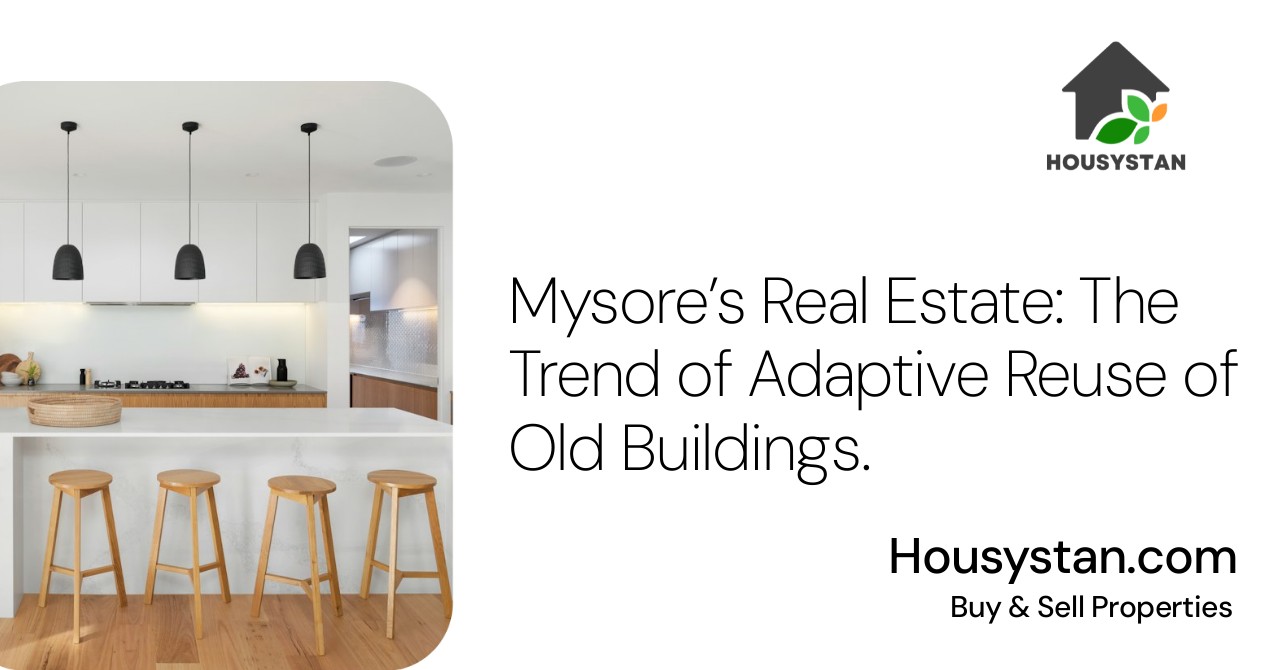Mysore’s Real Estate: The Trend of Adaptive Reuse of Old Buildings
Read latest blogs and articles from Housystan

The Information mentioned here was last updated on:
14/12/2025Mysore’s Real Estate: The Trend of Adaptive Reuse of Old Buildings
Mysore, renowned for its rich heritage and vibrant culture, is experiencing a significant shift in its property landscape. The city’s real estate sector is witnessing a growing trend of adaptive reuse, where historic structures and vintage buildings are being transformed into modern spaces. This innovative approach not only preserves Mysore’s architectural legacy but also addresses the rising demand for contemporary residential, commercial, and hospitality spaces.
Adaptive reuse in Mysore involves converting old palaces, colonial-era houses, and age-old commercial establishments into boutique hotels, coworking spaces, restaurants, and luxury apartments. This trend has gained momentum due to the city’s increasing appeal among tourists, business travelers, and professionals seeking unique living and working environments. Developers and investors see immense potential in this sustainable practice, as it leverages existing infrastructure while minimizing environmental impact.
- Verified Tenants/Buyers
- Unlimited Property Listing
- Zero subscription/charges fee
The local government of Mysore has also introduced supportive policies to encourage the restoration and repurposing of heritage buildings. These initiatives make it easier for property owners and real estate developers to obtain necessary permissions and incentives, further fueling the adaptive reuse movement. As a result, once-neglected structures are now being revitalized, contributing to both the city’s economy and its visual charm.
Residents and visitors alike benefit from the adaptive reuse trend. Locals enjoy access to new amenities and lifestyle options, while tourists appreciate the city’s unique blend of history and modernity. Iconic neighborhoods such as Lakshmipuram, Devaraja Mohalla, and Nazarbad are at the forefront of this transformation, attracting both investment and attention from across Karnataka and India.
For those considering real estate investment in Mysore, the adaptive reuse of old buildings presents a promising opportunity. Not only does it align with sustainable urban development goals, but it also adds value to the city’s property market. With its strategic location, robust infrastructure, and growing interest in heritage conservation, Mysore stands out as a leading destination for innovative real estate ventures in South India.